We set off from camp to drive part of the lavender route around the Valensole plateau. There is a brochure with a map of Provence that has 7 lavender routes marked out with viewpoints, distilleries and other sights to see. We had decided on a few segments that we wanted to do and the Valensole plateau is the main producer of lavandin.
We drove back to the field we had seen the day before and parked on the side of the road. A few minutes later we were joined by several more cars, a van of tourists on a tour, and eventually an entire tour bus full of people. We took lots of pictures of the fields heading off over the rise in the hill before moving on.
Our next stop was a sunflower field that we had also passed the day before. It was planted beside a shop selling oils and other lavender products. The way in which it was planted made us think that perhaps the shop had decided that would be a good spot for the field since it was a big tourist draw. There was lots of room in between the plants which is unusual for a sunflower field, but it worked well for all the tourists standing for their photo. Of course, we did the same! We noticed one family had a small girl who was just refusing to go in between the sunflowers for her photo, despite the protests coming from her family.
I figured she had been stung by bees in the lavender fields and had figured out that she was safer further away. The sunflowers were incredible and such a bright yellow contrasted nicely with the lavender fields further away.
We continued on our drive, becoming a bit pickier about which fields we wanted to stop at. Many fields had weeds growing through them and since there were so many fields, we could choose the nicer looking ones. A lot of the fields were planted beside spelt which is also grown in the area. The contrast between the golden spelt (called épeautre) and the purple lavender was also amazing. The fields that were sloped or had bumps or curves in the fields were the ones that were the most interesting to take pictures off since you could really see them heading off into the distance. We saw one lovely small stone shelter in the middle of a field, but none of the bories we had seen on lots of postcards.
We stopped at another spot that had sunflowers, olive trees and lavender planted close to each other; the soil was quite red compared to fields we had seen earlier. We saw lots of bee hives placed near some fields since lavender honey is a popular variety. We set off down a small departmental road and noticed that there were a lot fewer vehicles which was nice. We stopped at another field that was planted on a hill and as Anoop went off to take more photos, he got his second bee sting of the day. He decided that walking through a lavender field where you can hear the bees buzzing as soon as you step out of the car in flip flops and shorts was probably not the best idea.
On our way back to camp we stopped at a distillery where you could see the equipment used to distill the essential oils. We wandered over to the distilling area and the operator waved us over; he said that it was their first batch of the year! He showed us the big bales which weigh ½ ton each; each steamer holds one ton of lavender. The lavender is steamed which traps the oils in the water vapour. The vapour then goes through a series of water-cooled tubes and emerges in a metal barrel below. The water stays in the bottom of the barrel where they drain it away to use as lavender water; the oil floats to the top where it overflows from a reverse funnel and thus remains separate. It was quite interesting to see the equipment in operation since we had only been to a museum and seen it on video on our previous visit. We then climbed up the stairs to the roof of the distillery since they had a great view over the fields across the street. Anoop then went back to ask the operator a few questions while I popped into the shop.
I picked up a small bottle of lavandin oil which is supposed to help remove the sting or itch from insect bites. Anoop came back to tell me that they had finished distilling the first batch and were now loading the steamers with fresh bales. We headed back over to watch this process and learned that 1 ton of lavandin produces 25 l of oil. They were selling the oil at €93 per litre for lavandin (we only bought €3 worth) and fine lavender was going for €250 per litre. It was interesting to see their relative lack of safety equipment while handling the steaming bales of lavender and operating the heavy machinery. Why wear steel-toed boots when you can wear espadrilles and a singlet?! Forget safety goggles, too – the only protective equipment they had was a pair of gloves. We then continued on our way back to camp to enjoy the pool for the rest of the afternoon.
Lavender on the Valensole Plateau
Saturday, July 13, 2013
 Valensole, Provence, France
Valensole, Provence, France
Other Entries
-
156Commuting to the Camargue
Jun 1627 days prior Saliers par Arles, Francephoto_camera85videocam 0comment 2
Saliers par Arles, Francephoto_camera85videocam 0comment 2 -
157Exploring the Chateau in Les Baux
Jun 1726 days prior Les Baux de Provence, Francephoto_camera55videocam 0comment 1
Les Baux de Provence, Francephoto_camera55videocam 0comment 1 -
158Perched Village of Gordes
Jun 2023 days prior Gordes, Francephoto_camera45videocam 0comment 0
Gordes, Francephoto_camera45videocam 0comment 0 -
159Great Market, Incredible Ice Cream & Amazing Views
Jun 2122 days prior Lourmarin, Francephoto_camera42videocam 0comment 0
Lourmarin, Francephoto_camera42videocam 0comment 0 -
160Ochre Quarry in Roussillon
Jun 2221 days prior Roussillon, Francephoto_camera77videocam 0comment 0
Roussillon, Francephoto_camera77videocam 0comment 0 -
161Sunday Market and Waterwheels
Jun 2320 days prior L'Isle-sur-la-Sorgue, Francephoto_camera36videocam 0comment 0
L'Isle-sur-la-Sorgue, Francephoto_camera36videocam 0comment 0 -
162Fontaine de Vaucluse
Jun 2419 days prior Fontaine de Vaucluse, Francephoto_camera52videocam 1comment 0
Fontaine de Vaucluse, Francephoto_camera52videocam 1comment 0 -
163Village des Bories, Menerbes and Lacoste
Jun 2518 days prior Menerbes, Francephoto_camera51videocam 0comment 0
Menerbes, Francephoto_camera51videocam 0comment 0 -
164Sault, Gorge de la Nesque & Mont Ventoux
Jun 2617 days prior Sault, Francephoto_camera42videocam 0comment 0
Sault, Francephoto_camera42videocam 0comment 0 -
165Seguret
Jun 2716 days prior Seguret, Francephoto_camera24videocam 0comment 0
Seguret, Francephoto_camera24videocam 0comment 0 -
166Venasque & a Return to Isle sur Sorgue
Jun 2815 days prior L'Isle-sur-la-Sorgue, Francephoto_camera37videocam 0comment 0
L'Isle-sur-la-Sorgue, Francephoto_camera37videocam 0comment 0 -
167Pernes-les-Fontaines
Jun 2914 days prior Pernes-les-Fontaines, Francephoto_camera29videocam 1comment 3
Pernes-les-Fontaines, Francephoto_camera29videocam 1comment 3 -
168The Tour de France speeds by
Jul 049 days prior Maussane-les-Alpilles, Francephoto_camera33videocam 1comment 0
Maussane-les-Alpilles, Francephoto_camera33videocam 1comment 0 -
169Hiking in the Alpilles
Jul 058 days prior Maussane-les-Alpilles, Francephoto_camera17videocam 0comment 0
Maussane-les-Alpilles, Francephoto_camera17videocam 0comment 0 -
170Colorado Provencal
Jul 076 days prior Rustrel, Francephoto_camera28videocam 0comment 4
Rustrel, Francephoto_camera28videocam 0comment 4 -
171Abbaye de Valsaintes & Simiane-la-Rotonde
Jul 085 days prior Simiane-la-Rotonde, Francephoto_camera57videocam 0comment 0
Simiane-la-Rotonde, Francephoto_camera57videocam 0comment 0 -
172Exploring the Verdon Gorge
Jul 121 day prior Moustiers Sainte-Marie, Francephoto_camera97videocam 1comment 0
Moustiers Sainte-Marie, Francephoto_camera97videocam 1comment 0 -
173Lavender on the Valensole Plateau
Jul 13 Valensole, Francephoto_camera48videocam 1comment 0
Valensole, Francephoto_camera48videocam 1comment 0 -
174Forcalquier
Jul 163 days later Forcalquier, Francephoto_camera69videocam 1comment 0
Forcalquier, Francephoto_camera69videocam 1comment 0 -
175Hot Air Ballooning and the Bastide St. Georges
Jul 185 days later Forcalquier, Francephoto_camera119videocam 6comment 0
Forcalquier, Francephoto_camera119videocam 6comment 0 -
176Les Aventurières du Goût Cooking Adventures
Jul 207 days later Brantes, Francephoto_camera87videocam 0comment 0
Brantes, Francephoto_camera87videocam 0comment 0 -
177Lavender fields around Sault
Jul 218 days later Sault, Francephoto_camera71videocam 1comment 0
Sault, Francephoto_camera71videocam 1comment 0 -
178Market Day in Vaison-la-Romaine
Jul 2310 days later Vaison-la-Romaine, Francephoto_camera30videocam 0comment 0
Vaison-la-Romaine, Francephoto_camera30videocam 0comment 0 -
179Market in Malaucene and Drive to Beaune
Jul 2411 days later Malaucene, Francephoto_camera21videocam 0comment 0
Malaucene, Francephoto_camera21videocam 0comment 0 -
180Return to Beaune and on to Amiens
Jul 2512 days later Beaune, Francephoto_camera40videocam 0comment 0
Beaune, Francephoto_camera40videocam 0comment 0 -
181Floating Gardens in Amiens
Jul 2815 days later Amiens, Francephoto_camera110videocam 1comment 0
Amiens, Francephoto_camera110videocam 1comment 0 -
182Heading Home
Aug 2139 days later Copthorne, United Kingdomphoto_camera28videocam 0comment 0
Copthorne, United Kingdomphoto_camera28videocam 0comment 0

 Valensole, Provence, France
Valensole, Provence, France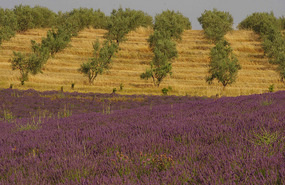
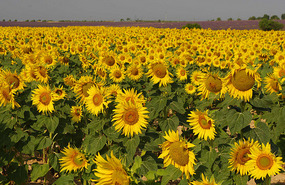
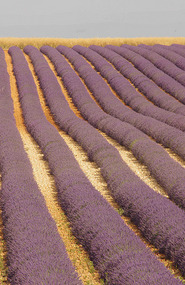
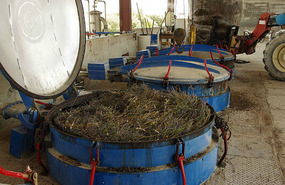













































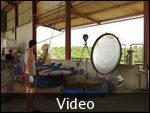
2025-05-22